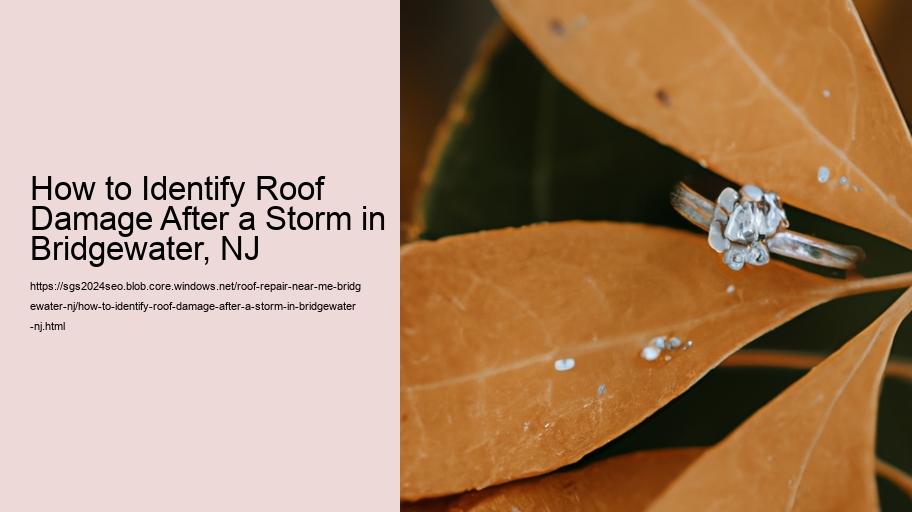How to Identify Roof Damage After a Storm in Bridgewater, NJ
How to Understand Warranties Offered by Roof Repair Companies in Bridgewater, NJ .
Living in Bridgewater, NJ, means experiencing the full range of weather conditions, from sunny summer days to harsh winter storms. While each season has its own charm, the storms that occasionally sweep through the area can leave behind significant damage, particularly to your roof. As the first line of defense against the elements, your roof plays a crucial role in protecting your home. Identifying roof damage after a storm is vital to preventing further issues. Here's a guide on how to effectively assess your roof for damage once the skies clear.
1. Conduct an Initial Ground-Level Inspection
Before grabbing a ladder, start with a ground-level inspection. Walk around your property and visually inspect the roof using binoculars if necessary. Look for obvious signs of damage such as missing shingles, visible gaps, or sagging areas. Pay attention to the perimeter of your house for any pieces of shingles or roofing material that may have been blown off during the storm.
2. Check for Water Damage Indoors
Sometimes, roof damage is more apparent inside your home. After a storm, inspect your attic and ceilings for signs of water intrusion. Look for water stains, damp spots, or mold growth on the ceiling and walls. These signs often indicate that water has penetrated the roof, which could result from damaged shingles or flashing.
3. Inspect the Gutters and Downspouts
Your gutters and downspouts can provide clues about the condition of your roof. Check for the accumulation of granules in the gutters, which is a sign that your shingles may be deteriorating. Additionally, ensure that the gutters and downspouts are securely attached and free from debris. Properly functioning gutters are essential for directing water away from your home, preventing further damage.
4. Look for Structural Damage
Storms, especially those involving high winds or falling debris, can cause structural damage to your roof. Examine the roof for any signs of sagging or bowing, which could indicate compromised structural integrity. Additionally, inspect areas around chimneys, vents, and skylights, where damage is more likely to occur.
5. Examine the Flashing
Flashing is the metal strip installed around roof features like chimneys and vents to prevent water from seeping in. After a storm, check the flashing for any signs of rust, cracks, or displacement. Damaged flashing can lead to leaks and should be repaired promptly.
6. Assess the Condition of the Shingles
Shingles are your roof's primary defense against the elements, so it's crucial to assess their condition. Look for shingles that are cracked, curled, or missing. High winds and hail can cause significant damage to shingles, compromising their effectiveness. In Bridgewater, NJ, where storms can be unpredictable, having intact and secure shingles is essential.
7. Hire a Professional Roofing Contractor
While a DIY inspection can help you identify obvious issues, hiring a professional roofing contractor for a thorough assessment is always a good idea. Professionals have the expertise and equipment to safely and accurately evaluate your roof's condition. They can spot hidden damage and provide recommendations for necessary repairs.
8. Document the Damage
If you find any damage, it's important to document it thoroughly. Take clear photos of the affected areas and make detailed notes. This documentation will be invaluable when filing an insurance claim. Many homeowners' insurance policies cover storm damage, and having comprehensive records can streamline the claims process.
9. Take Immediate Action
Once you've identified roof damage, it's crucial to take immediate action. Delaying repairs can lead to more extensive damage and costly repairs down the line. Contact a trusted roofing contractor in Bridgewater, NJ, to address the issues promptly. Temporary measures, like covering damaged areas with a tarp, can help prevent further water intrusion until repairs are made.
10. Prevent Future Damage
Finally, consider steps to prevent future storm damage. Regular maintenance, such as cleaning gutters, trimming overhanging branches, and inspecting the roof for wear and tear, can go a long way in maintaining your roof's integrity. Additionally, investing in high-quality roofing materials and professional installation can enhance your roof's resilience against severe weather.
In conclusion, identifying roof damage after a storm in Bridgewater, NJ, involves a combination of visual inspections, indoor checks, and professional assessments. By taking prompt action and prioritizing regular maintenance, you can ensure that your roof remains strong and capable of protecting your home through all seasons. Remember, your roof is an investment in your home's safety and longevity, so give it the attention it deserves.
